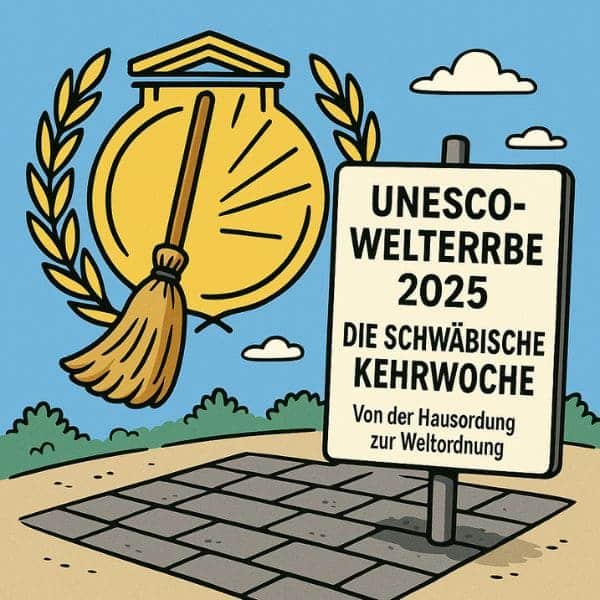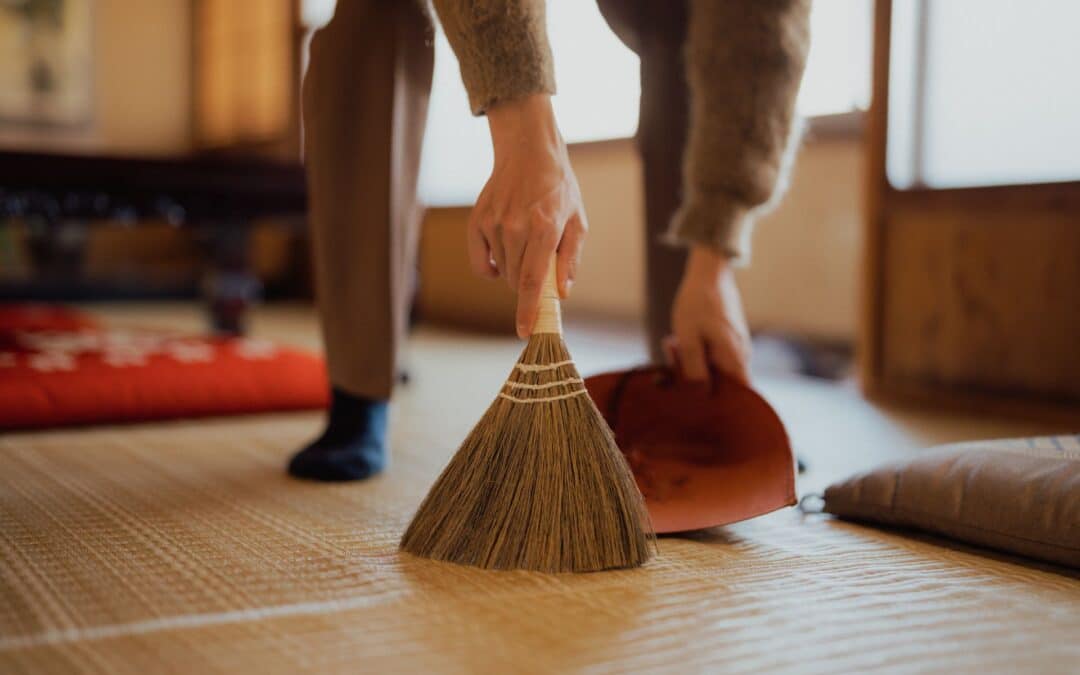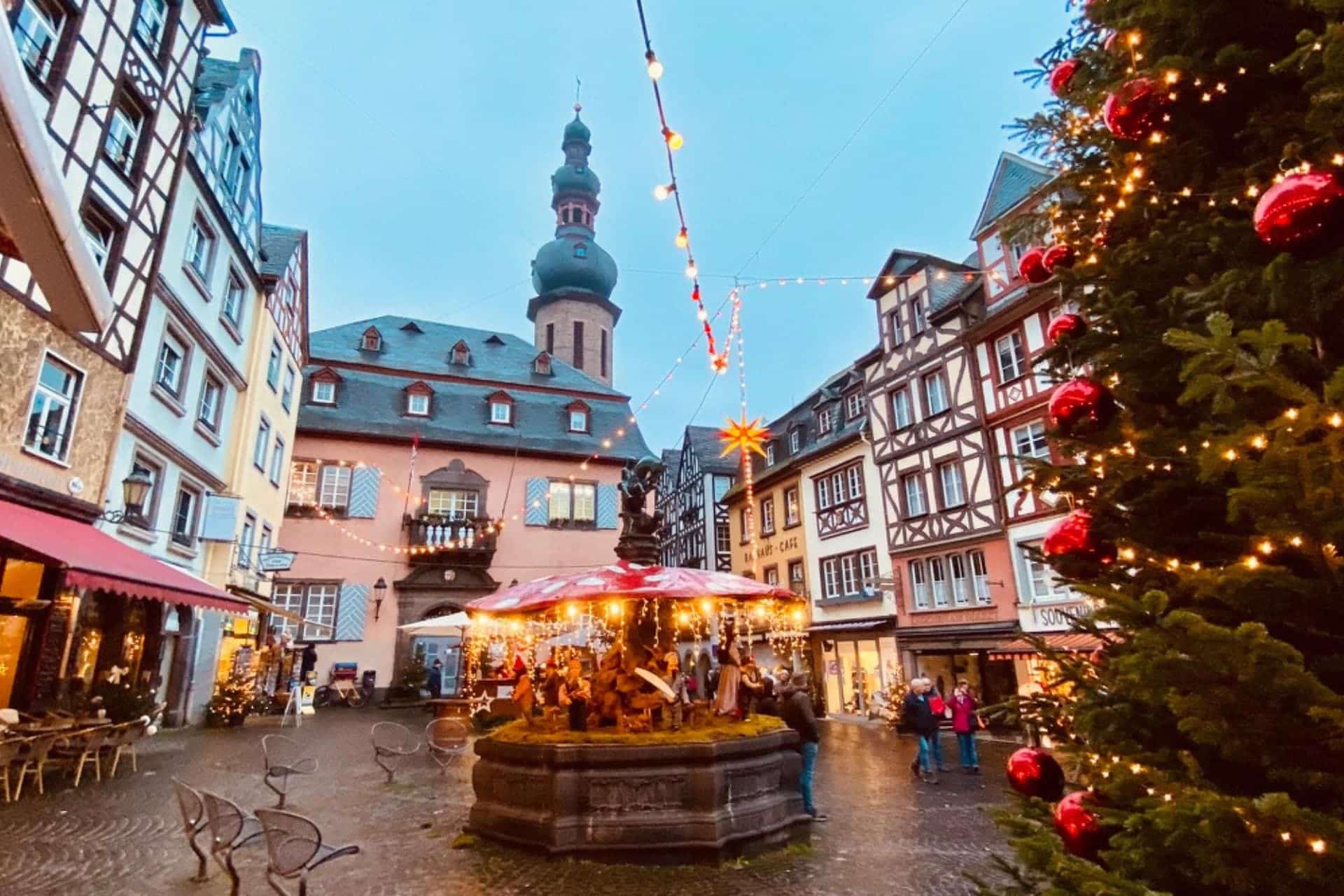Updated on May 29, 2025 by Angelika Klein
1. intangible cultural heritage
It's official! The Swabian Kehrwoche has made it: it has been added to the UNESCO list of intangible cultural heritage. This is the first time that a cleaning tradition from the heart of Europe has been internationally recognized as worthy of preservation. The reasoning: "Schwäbische Kehrwoche promotes social cohesion, civic engagement and conveys values such as order, discipline and consideration." And what does the Swabian say? "So ischs recht!" ("That's right!")
UNESCO not only recognizes historical buildings or natural sites as UNESCO World Heritage but also living cultural traditions, which are passed on from generation to generation. These include:
- Customs and rituals
- Craft techniques
- Music, dance and theater forms
- Social practices and everyday culture
The aim is to preserve cultural knowledge that creates identity and promotes community. In Germany, for example, the bread culture, Punch and Judy as a game principle or the Augsburg Hohe Friedensfest are listed as intangible cultural heritage.
You can find out more on the official website of the German UNESCO Commission:
🔗 www.unesco.de/immaterielles-kulturerbe
2. What is the Swabian Kehrwoche at all?
The Swabian Kehrwoche (sweeping week) is more than just a chore - it is a lifestyle. Anyone growing up in Baden-Württemberg learns early on that the sidewalk doesn't sweep itself. And the stairwell doesn't shine for no reason either. The weekly cleaning responsibility is usually passed on from house to house, from floor to floor or from apartment to apartment - usually in writing, occasionally with a warning glance from the neighbor.
Typical: A small wooden broom on a wooden board, which signals whose turn it is at the moment. Woe betide you if you forget! Kehrwoche is a system of clear rules, social conventions - and a good feeling, to do something for the community (or at least make it appear that way). 😄
| 📍Region: | Baden-Württemberg (especially Stuttgart and the surrounding area) - the heartland of German cleanliness. |
| 📜 Origin: | Count Eberhard im Bart 1492: "To keep the city clean, everyone should take their dung out every week." A master of prioritization, |
| 📏 First regulation: | Alley cleaning regulations from 1714 - early proof: where there is scrubbing, there is structure. |
| 🎯 Goal: | Keeping communal areas in the residential environment clean - according to the rules, systematically and meticulously. |
| 🧽 Typical utensils: | Scrubbing brush, cleaning bucket, broom, hand brush, dustpan - the starter kit for world culture. |
| 📛 Identification mark: | The legendary wooden sign with broom symbol or a meticulously managed sweeping schedule - digital is for others. |
| 🔄 Variants: | Kleine Kehrwoche (small sweeping week): Area in front of the apartment door and stairs to the next floor. Große Kehrwoche (big sweeping week): Sidewalk in front of the house, house entrance, basement stairs, common rooms - with snow shovel upgrade in winter. |
| 🤝 Social impact: | Neighborhood care, order - and the subtle power of the cleaning plan |
Perhaps the oldest known Kehrwoche sign (estimated at the turn of the 19th/20th century) hangs in the Museum der Alltagskultur (Museum of Everyday Culture), Waldenbuch Castle. Photo: Heike Fauter. © Württemberg State Museum CC BY-SA 4.0, via Wikimedia Commons
3. The Origins: From Street Cleaning to Social Control
Kehrwoche has an astonishingly long history - and like so many things, it starts with dirt. As early as 1492, Count Eberhard im Bart obliged the citizens of Stuttgart to clean the streets. This primarily referred to the weekly removal of manure, slaughterhouse waste and faeces. Over the centuries, this became the institution of Kehrwoche: with fixed sweeping times, clear responsibilities and a strict schedule.
Particularly popular: the iconic wooden sign with a broom, which proclaims silently but insistently: "It's your turn now." Kehrwoche thus became the Swabian version of social control - subtle, efficient and completely silent. Even after the official abolition of Kehrwoche in Stuttgart in 1988, it still works today. Because anyone who neglects their sweeping duty does not have to reckon with the public order office - but with much worse:The whispered but scathing verdict of the neighborhood.
4. The Great Kehrwoche Fight of 1988
What many people don't know: In 1988, the city of Stuttgart under Lord Mayor Manfred Rommel the Kehrwoche has actually been officially abolished. The reason? It was considered outdated and too bureaucratic. The initiative led to nothing less than a cultural upheaval in Swabia. Newspapers ran headlines about the "Revolution with the broom", citizens' initiatives demanded: "Our sweeping week stays!" And older tenants insisted on continuing to sweep the sidewalk with their usual seriousness - no matter what the town hall says.
Ultimately, the duty was formally canceled, but practical? Never disappeared. In most apartment buildings, Kehrwoche is still practiced today and is usually regulated in the tenancy agreement. The Swabian Kehrwoche - an emotional heritage that is stronger than any law.
5. Kehrwoche is not the same as Kehrwoche
There are clear rules for the sweeping week - and subtle differences, which outsiders tend to confuse. But be careful: anyone in Swabia who mixes up the terms kleine (small) and große (big) Kehrwoche not only risks dirty corridors, but also reproachful glances from the first floor.
The Kleine Kehrwoche (small sweeping week) is the hallway version, so to speak: you clean the area outside your front door and wipe the stairs down to the next floor. Sounds manageable - but woe betide you if you leave a woolen mouse in the corner. Someone will definitely notice.
The große (big) Kehrwoche on the other hand, is the premier class. You go out into the field: you are responsible for the sidewalk in front of the house, the house entrance, the cellar stairs and common rooms. And in winter? Shoveling snow!
So, if you're unlucky, you come home from work - and sweep straight into the evening program.
Whether large or small: the Kehrwoche knows no mercy. Only shine, tidiness - and the scrutinizing eyes of the neighbourhood.
6. Why is the Kehrwoche UNESCO-Worthy?
- Cultural depth: Kehrwoche is an expression of Swabian virtues - diligence, order, punctuality, responsibility.
- Intergenerational transmission: Children are introduced to brooms, mops and dustpans at an early age.
- Ritual character: Always on Saturdays, on time, in silence - almost a meditative act.
- Social function: If you join in, you belong. Those who don't are suspicious (at the very least!).
7. UNESCO Recognition for the Swabian Culture of Order
The UNESCO justification states:
The Swabian Kehrwoche is a living example of a bourgeois culture of tidiness. Passing it on in families, neighborhoods and apartment buildings strengthens community, cleanliness and peaceful coexistence - albeit occasionally with a raised index finger.
There are even plans for an international Kehrwoche day, on which sidewalks are symbolically swept around the world. The first cities such as Tokyo, Zurich and Oslo have already expressed interest in adopting the model.

... Wait a minute ...
You think it's a good idea to declare the Swabian Kehrwoche an intangible cultural heritage? Me too, but ...
April Fool's Day!
Even if we all secretly wish for it: The Swabian Kehrwoche has not (yet) made it onto the UNESCO list. But let's be honest - it deserves it, doesn't it? And - all the rest of this article is true!
More German cult?
If you are interested in German peculiarities, traditions and charming everyday phenomena, you will find real stories on my blog on a regular basis from now on - without any April Fool's jokes.








Dear Angelica,
What a pity, what a pity that your article is just an April 1st concoction.
As an old Swabian with Swabian ancestors dating back to the Middle Ages, I am naturally attached to the Kehrwoche. What you write is true. Kehrwoche is a way of life. And it actually suits everyone. But unfortunately ...
Thank you for your in-depth research and the entertaining presentation.
Keep up the good work and best regards
Dietmar
Dear Dietmar,
Thank you very much for your appreciative comment! As an old Swabian, I'm particularly pleased that you felt addressed and entertained. Perhaps we at TWS (almost all of us are Swabians!) can work towards making the April Fool's joke a reality after all - for example with a flash mob (where the name becomes the program!).
Greetings
Angelika
Dear Angelica,
Thank you so much for this post, it made me laugh so much! Wonderful! Fortunately, I've never lived in Baden-Württemberg myself, because the Kehrwoche would certainly have been my free spirit's undoing 😉
Very cordial
Pia
Dear Pia,
I'm glad that my post amused you! In the past, I had no choice but to stick to the rules - and more than once I was openly or covertly accused of unswabian sloppiness. But in the last 20 years, I've only moved into houses where there was no compulsory sweeping 😅. Where I live now, there is a janitor, which I really enjoy in both summer and winter.
Warm regards,
Angelika